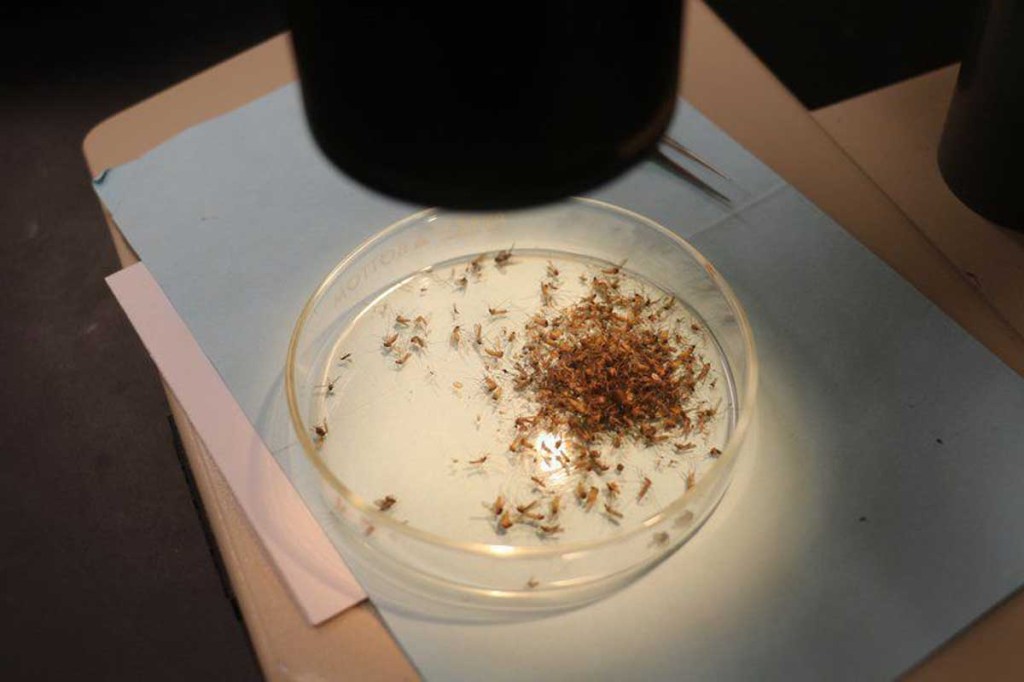VSU guards against mosquitoes
Published 4:00 pm Tuesday, June 19, 2018

- Amanda M. Usher | The Valdosta Daily TimesThere are at least 30 species of mosquitoes residing in the Lowndes County area. They are studied at Valdosta State University mosquito-surveillance lab for viruses.
VALDOSTA — For Corey McGlynn, ensuring the community’s safety against disease-carrying mosquitoes is important.
McGlynn, a junior biology student, has been working in Valdosta State University’s mosquito-surveillance lab for one month sorting and classifying the insects by species.
The lab, which was established in 2001, is a joint effort between the university, the City of Valdosta and Lowndes County.
In the lab, potential disease-carrying species are identified and sent to a veterinary laboratory at the University of Georgia for culture testing to detect viruses, said Dr. Mark Blackmore, a VSU biology professor.
“It’s good to be observant to see what we have in the area,” McGlynn said. “Let’s say we find a mosquito with a disease in it; we can now inform the public and try to do certain measures to make sure that doesn’t spread to people.”
McGlynn begins his research by first determining the mosquitoes type of abdomen, which can be either pointed or round. Markings, colorings and wings are also taken into account while sorting.
Students set “normal” and “specialized” traps in select areas around the county Sunday nights to catch mosquitoes. The traps are retrieved Monday, Tuesday and Wednesday mornings for testing at VSU.
At least 30 various species are collected through the surveillance lab, and senior biology and psychology major Marcus Diaz is one of two students who puts out the traps every week.
“We have traps all the way throughout Lowndes County, which includes Hahira, Lake Park and Valdosta,” he said.
Normal traps, or gravid traps, utilize gravid water to appeal to the mosquitoes while special traps use melted dry ice to engage the more diverse species of mosquitoes, Diaz said.
“We kind of soak (the gravid trap) in hay, and it somewhat ferments,” he said. “Essentially, we’ll put the water in a bucket, and so, there will be a fan in a trap … the mosquitoes will try to fly toward the water.”
The mosquitoes will lay their eggs in the water, and the fan will “suck them up into the net,” Diaz said.
VSU reports its findings to public works departments which determine where to spray based on the highest population centers for mosquitoes, said Anthony Musgrove, city public works operations superintendent.
“We’ll look at the numbers, and if one of the numbers escalates real high, we’ll send out a truck to do some extra additional spraying,” he said.
Robin Cumbus, county public works director, noted an occurrence from about 10 years ago when the research lab was able to assist with a mosquito-related public health emergency following a tropical storm.
“Without the historical data that Dr. Blackmore provided, we would not (have) been eligible for any kind of (Federal Emergency Management Agency) funding,” she said.
Blackmore said Valdosta is currently having a “low-virus year,” with the number of mosquitoes being below average.
“For most of the time, we’ve been well below average,” he said. “We see peaks and valleys in there … but generally speaking, it hasn’t been a bad year.”
Mosquitoes are most attracted to stagnant water, Blackmore said. He said they reside in tree holes that hold water, temporary puddles after rain or surrounding rivers that flood.
“A lot of the ones that are problems around houses are ones that breed in containers or in small bits of water that we create for them,” he said.
Some of the examples Blackmore gave to describe how residents create still water and attract mosquitoes include bird baths, flower pot plates and tarps.
Amanda Usher is a reporter at The Valdosta Daily Times. She can be contacted at 229-244-3400 ext.1274.



